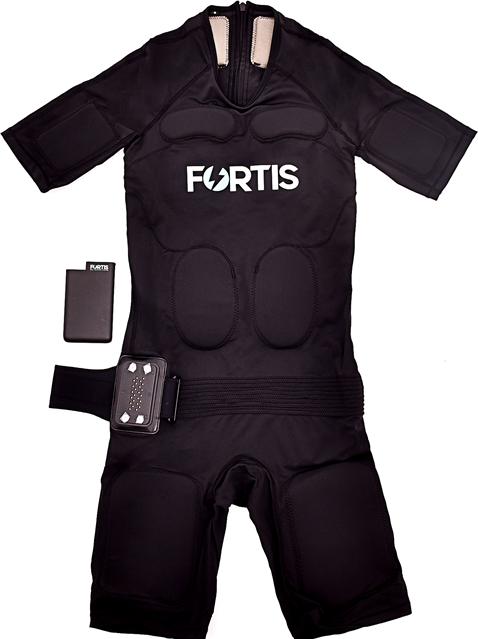

Electrical muscle stimulation: complex strength training under current
Simon and Yannick are identical twins. The brothers have taken part in our EMS challenge for Galaxus over the last three months. Conclusion: training under power has advantages and certain pitfalls.
Gentle joint-friendly strength training or muscle atrophy prevention after an injury: some physiotherapists and a handful of fitness studios have so far utilised the benefits of electrical muscle stimulation, or EMS for short. This stimulation can be used to strengthen and grow the muscles as well as for regeneration purposes.
A niche that is becoming increasingly popular. The manufacturers of EMS suits have also recognised this. Recently, there have been products that do not require cables. This was previously one of the major disadvantages: freedom of movement.
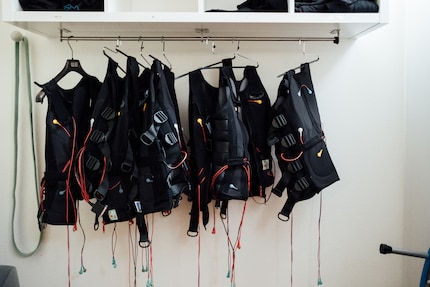
In the Galaxus range since this spring: the EMS suit from Fortis completely without cables.

Galaxus EMS Challenge
But what are the benefits of training under power, what are the advantages and possible disadvantages? We wanted to find out and launched the Galaxus EMS Challenge. The identical twins Simon and Yannick from Küttigen near Aarau took part. The two students responded to our call and took part in the three-month training programme.
The Höferlin Institute
The test was professionally supervised by the Höferlin Institute in Basel. In addition to physiotherapy and personalised training, the family business also specialises in medical EMS training.
Judith and Andreas Höferlin gave Simon and Yannick a thorough check-up at the start of the challenge at the end of August. This included a bioelectrical impedance analysis. This was used to determine their body composition. The brothers' spines were also measured and a physiotherapy analysis was carried out.
The initial situation
A lot of data came together that was interesting for Simon and Yannick. We subsequently focussed on two parameters: body fat and active body cell mass, or BCM for short. This includes all metabolically active areas of the body, including the skeletal muscles. Overall, Yannick performed slightly better here than his brother:
- Yannick 15.7% fat / 33.2 kg BCM
- Simon: 17.2% fat / 32 kg BCM
In simple terms, Yannick had more muscle and less fat than Simon. On the other hand, he was more agile, more stable in his legs and had more jumping power.
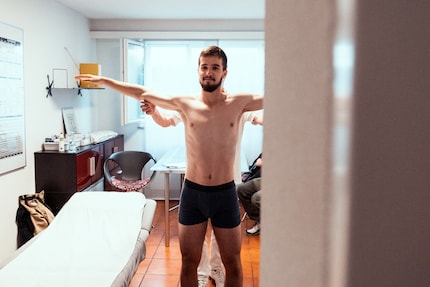
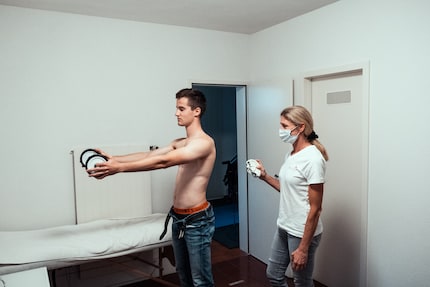
The challenge
Now we needed a training plan for the next three months and the challenge was complete. Simon and Yannick recorded their training sessions using the Mywellness app. This is available in the Apple Store and on Google Play. Judith Höferlin put together two programmes: one functional workout and one designed for strength. The brothers completed the same workouts: the same exercises on the same days and with identical sets and repetitions. However, Yannick trained for three workouts for 20 minutes each in a suit under power.
As the two live in the same household and have a practically identical daily routine, they also eat in a very similar way. Therefore, they did not have to take any special dietary measures.
Now that twelve weeks have passed, it's time to take stock. Who has put on more body cell mass and reduced body fat? Yannick with the EMS suit from Fortis or Simon, who trained without electricity.
The results
These are the bare figures:
- Yannick: - 1.3 % fat / + 0.5 kg BCM
- Simon: - 4.5 % fat / + 3.1 kg BCM
And how do we assess this now?
Both brothers have benefited enormously from the training. Simon, who trained without a suit, started with poorer values and made bigger leaps during the three months than Yannick with a suit. However, the intensive training has not only left positive traces:
Simon now has fat values at the lower limit. I would certainly reduce the intensity for him at the moment and look at his diet.
Yannick will also be focussing on regeneration over the next few weeks.
Both brothers have improved their functional leg mobility and their balance has also improved. Yannick in particular, who started with deficits in this area, now has significantly better leg coordination. However, his spine tends to be a little unstable and not as flexible in rotation. This is also due to the fact that the focus has recently been heavily on strength exercises. Despite many exercises with rotations, he was unable to increase his mobility. This must now be done through stretching exercises.
According to Judith Höferlin, Yannick should also perform the exercises less explosively and more slowly in future in order to focus even more on stabilising the spine and the quality of movement execution.
According to Judith Höferlin, this is a criterion that speaks against self-executed EMS or build-up training at home without instruction. With a high level of motivation, there is a risk of gaining (too) much weight and destabilising the body as a result.
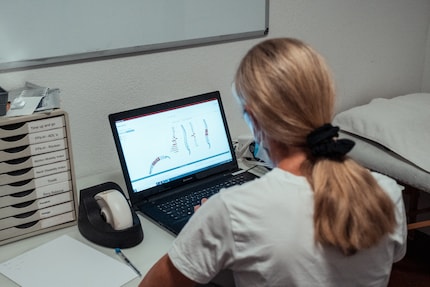
Yannick in conversation
And what does Yannick think of the Fortis EMS suit, which he has now been using intensively for three months? Here is his assessment:
** What are your experiences with the suit: what was positive, what was negative? Yannick Heibei: The experience of intensive training under power was positive. The suit is particularly suitable for core and bodyweight workouts. However, a programme of just 20 minutes can sometimes feel unsatisfactory. You almost feel like you haven't done enough.
Please describe the feeling of training under power. How should I imagine that? And were there any comments about this in the fitness centre?The electricity can feel uncomfortable at the beginning of the workout, but it doesn't bother you while you're moving. There were hardly any comments at the fitness centre, but I usually do my workouts without much social interaction. There are certainly more comfortable outfits, but if you don't want to show off your privates, you can easily train in trousers over a suit.
What about handling and wearing comfort?
The suit offers enough freedom of movement for almost all exercises, the battery on the hips is almost never in the way. It is comfortable to wear and the zip with the strap also works well. Training with the suit is sweaty. You should wash it after two or three training sessions, otherwise it develops a bitter odour. The app also runs without any major problems and rarely or never crashes. Thanks to the app, the intensity and active body regions can be controlled easily and directly. The battery life is also impressive.
One of the advantages of EMS training is the short duration of the workouts. The training is also easy on the joints. You have now tested the suit for three months. Are there any disadvantages from your point of view?
The suit is only suitable for visits to the gym to a limited extent, as the effective training time of the 20 minutes in which the programme runs is reduced by disinfecting the dumbbells or equipment and changing the stations or weights. Free weight training or bodyweight exercises at home are more suitable.
What is your final conclusion: yes/no recommendation to buy?If a customer has little time for sports and has the right budget, I recommend buying it.
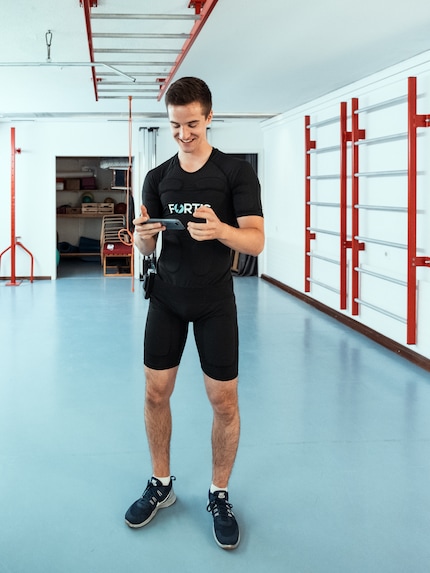
The bottom line
It is clear that our EMS challenge with Simon and Yannick was not a scientific test. Nevertheless, we are convinced that the identical twins and our setting provided us with some meaningful figures. For example, we were surprised that Simon achieved better results without a suit than his brother. However, he started the challenge with more body fat and less muscle mass. His potential was therefore greater.
Another realisation: the intensive training has left its mark on the 20-year-olds. Positive and negative. Recovery and only light physical activity are now the order of the day for both of them.
The benefits of the EMS suit can be summarised as follows:
A maximum of three 20-minute workouts per week instead of hours of sweating in the gym; workouts that are easy on the joints instead of high loads on the knees and other parts of the body and unlimited freedom of movement. These are the most important arguments in favour of the suit. On the other hand, there are the high purchase costs and the fact that the suit is only of limited use in the gym. This is because cleaning the equipment and changing stations takes up valuable training time.
And then there is the question of what role the coronavirus will have on our future training behaviour. Many amateur athletes are already staying away from the gym for fear of infection. Investing the money saved on a plan in an EMS suit and training at home in future may well be worth considering.
From radio journalist to product tester and storyteller, jogger to gravel bike novice and fitness enthusiast with barbells and dumbbells. I'm excited to see where the journey'll take me next.
Interesting facts about products, behind-the-scenes looks at manufacturers and deep-dives on interesting people.
Show all

